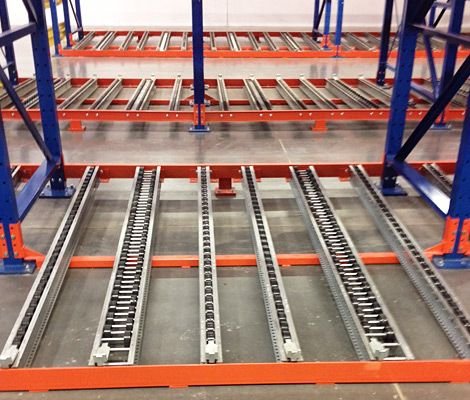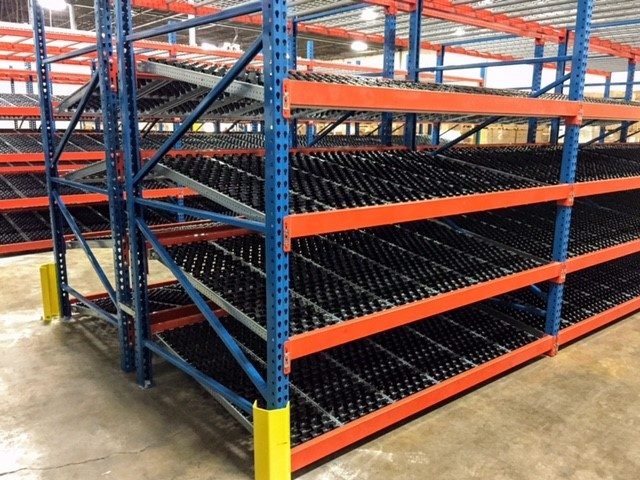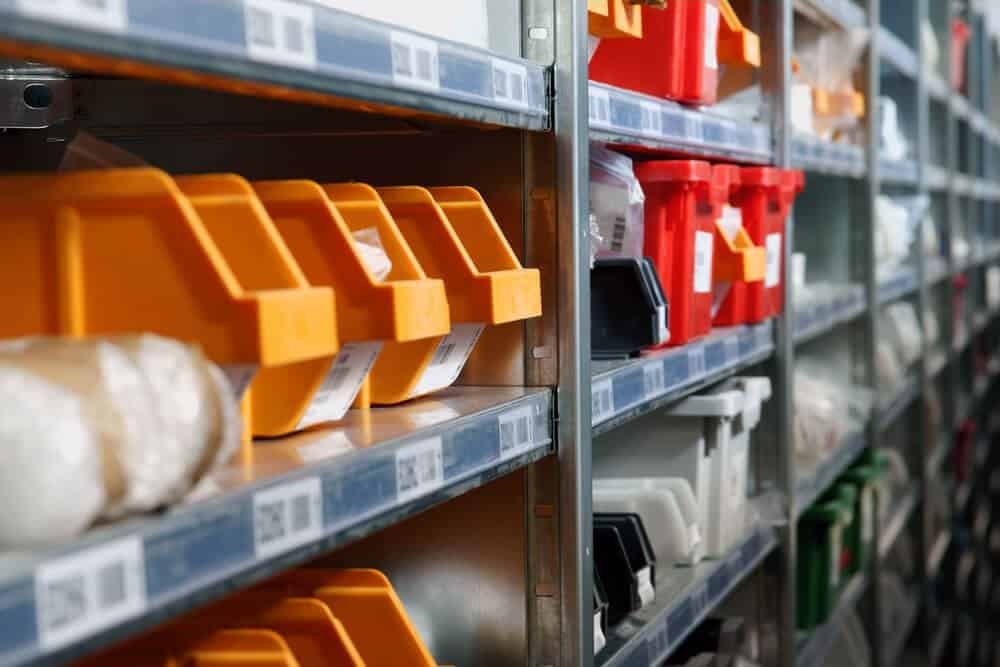SKU Replenishment: The Best User’s Guide for 2025
Warehouse replenishment is a critical logistics process involving the restocking of goods and materials in a warehouse or distribution center to maintain sufficient inventory levels for ongoing order fulfillment.
Table of Contents
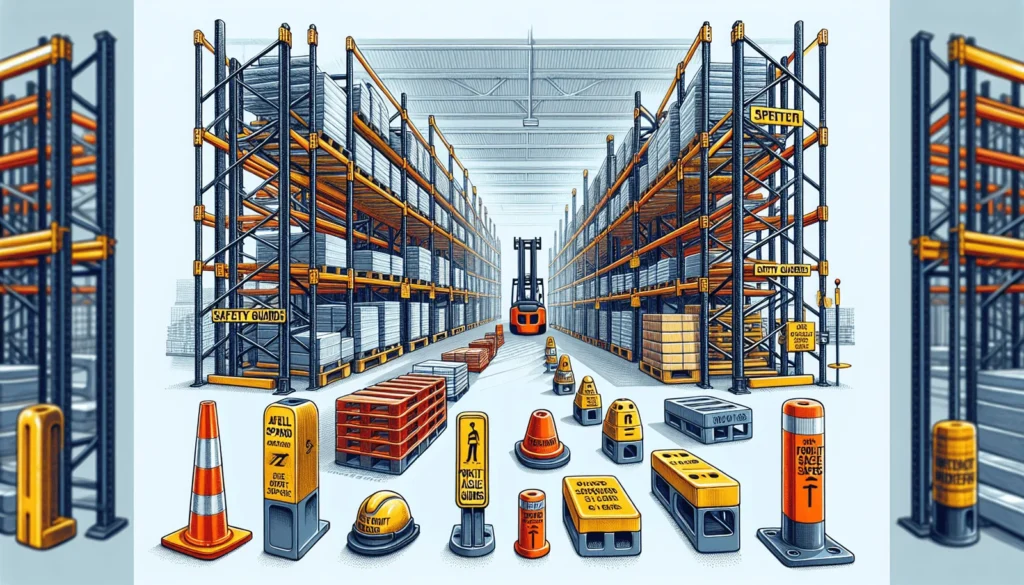
This process ensures that products are available on the shelves or in designated storage locations whenever needed, preventing stockouts that can disrupt the supply chain and impact customer satisfaction.
Replenishment strategies vary significantly, from basic methods like manual restocking to sophisticated systems using automated technologies and complex algorithms.
Replenishment in Supply Chain Management
Efficient replenishment is essential for the smooth operation of supply chains. It directly affects the ability of a business to meet customer demands promptly and accurately, which is vital for maintaining customer trust and competitiveness in the market.
Effective replenishment processes minimize inventory carrying costs by reducing excess stock and optimizing storage space. They also enhance operational efficiency by improving the allocation of labor and resources, reducing the time and effort spent on handling backorders or rush shipments.
Moreover, an optimized replenishment system adapts to changing demand patterns and scales accordingly, which is crucial for businesses experiencing seasonal fluctuations or growth. Inefficient replenishment can lead to either overstocking or understocking—both costly.
They are overstocking ties up capital in unsold goods while understocking results in missed sales opportunities and potential damage to customer relationships due to unmet expectations.
In summary, warehouse replenishment is not just about keeping products in stock. It’s about strategically managing inventory to align with business goals, enhance customer satisfaction, and achieve operational excellence.
Businesses can streamline their operations, reduce costs, and boost overall supply chain performance by ensuring that the right products are available at the right time and place.
Replenishment – The Real Bottleneck to Success

SKU replenishment can often become a bottleneck in warehouse operations for several reasons, impacting the overall efficiency and effectiveness of the supply.
The Complexity of Inventory Management
SKU (Stock Keeping Unit) replenishment involves managing many individual items, each of which may have different demand patterns, turnover rates, and handling requirements.
Tracking and forecasting for each SKU becomes complex, especially in environments with many products. Mistakes in forecasting or delays in replenishment can lead to stockouts or overstock situations, slowing down the entire supply chain.
Demand Variability
Some SKUs can have unpredictable demand due to seasonal trends, promotions, or changes in consumer preferences. This variability complicates replenishment planning because it requires dynamic adjustment of stock levels rather than a static replenishment strategy.
Inaccurate demand forecasts can lead to excessive inventory that ties up capital and space or insufficient stock, resulting in lost sales.
Replenishment Frequency and Timing
High-turnover SKUs need frequent replenishment, which can strain warehouse operations, especially if the replenishment processes are not optimized. The timing of replenishment activities must be carefully managed to ensure that they do not interfere with other warehouse operations, such as order picking or goods receiving.
Physical Constraints of the Warehouse
The layout and design of the warehouse can also contribute to replenishment bottlenecks. Inefficient placement of high-demand SKUs, poor accessibility to certain storage areas, and inadequate space for maneuvering handling equipment can all lead to delays in moving inventory from back-stock to primary picking locations.
Resource Allocation
Effective SKU replenishment requires the appropriate allocation of resources, including labor and equipment. Inadequate staffing or insufficient material handling equipment during peak replenishment periods can slow down the process, creating delays that ripple through the order fulfillment process.
Dependency on Suppliers
Replenishment is not only about moving items within a warehouse—it also depends on the timely receipt of products from suppliers. Delays in supplier delivery can create gaps in inventory that are difficult to fill promptly, especially for SKUs critical to the business’s operations or sales.
Technology and Integration Issues

The effectiveness of SKU replenishment is often tied to the warehouse management system (WMS) and its integration with other supply chain management software.
Outdated or poorly integrated systems can lead to inefficiencies in tracking inventory levels, forecasting demand, and executing replenishment orders. This can slow down the replenishment process and increase the risk of errors.
Many businesses are investing in advanced technologies like automated storage and retrieval systems (AS/RS), robotics, and sophisticated WMS with real-time data analytics and artificial intelligence capabilities to mitigate these bottlenecks.
These technologies help improve the accuracy of demand forecasting, optimize resource allocation, and enhance the overall speed and reliability of the replenishment process.
Basic Replenishment Methods
Pallet Replenishment
Pallet replenishment involves restocking warehouse shelves and picking locations with full pallets of goods. This method is typically used when high volumes of the same product are stored and shipped. It is most efficient when large quantities of a single SKU are moving through the supply chain, regardless of which area the SKU ships from.
Best Practices for Pallet Movement and Storage

- Use of Suitable Equipment: Employ pallet jacks, forklifts, or automated guided vehicles (AGVs) that can safely handle the weight and dimensions of the pallets.
- Pallet Quality Control: Regularly inspect pallets for damage to ensure they can support the load so as not to cause product damage or pose safety risks.
- Optimal Placement: Store heavier pallets at lower levels to stabilize racking systems and place fast-moving items closer to packing and shipping areas to minimize movement time.
- Clear Aisle Signage: Maintain clear, well-marked aisles to streamline the retrieval and restocking processes.
- Regular Training: Ensure staff are trained in safe pallet handling and storage practices, including the proper use of equipment and emergency procedures.
Case Replenishment
Overview of Case Handling
Case replenishment involves stocking and picking items at the case level. This is a common scenario in retail environments where products are delivered in cases but sold in individual units or smaller quantities. This method bridges the gap between bulk and fine picking, balancing efficiency with flexibility.
Techniques for Effective Case Replenishment

- Zone Picking: Divide the warehouse into zones based on product type or velocity and assign pickers to specific areas to improve efficiency.
- Batch Picking: Combine orders to minimize trips to the same locations, reducing travel time and increasing picking efficiency.
- Cross-Docking: When applicable, move incoming cases directly to outgoing shipping areas without storage to speed up order fulfillment and reduce handling.
Each Replenishment
Each replenishment, or piece picking, is picking individual items to fulfill specific orders. This method is most common in e-commerce and retail operations where customers purchase individual items rather than whole cases or pallets.
Strategies to Optimize Each Replenishment
- Advanced Picking Technologies: Implement pick-to-light or voice-picking technologies to speed up the picking process and reduce errors.
- Ergonomic Workstations: Design picking stations to minimize physical strain on workers, which can improve speed and accuracy while reducing injuries.
- Regular Re-Slotting: Analyze picking data to identify and re-slot frequently picked items into more accessible locations.
- Effective Inventory Layout: Arrange inventory to group items often sold together close to one another, reducing picking times.
These basic replenishment methods provide the foundation for efficient warehouse operations. Each method has specific applications, advantages, and optimization strategies, and they can be combined or tailored according to the operation’s unique demands.
Advanced Replenishment Strategies

Techniques to Reduce Frequency and Volume
- Consolidated Replenishment: Combine replenishment tasks to reduce the number of trips made to restock locations. This can be achieved by scheduling replenishment during off-peak hours, or batching replenishment needs across multiple areas or products.
- Demand-Driven Replenishment: Utilize real-time data analytics to adjust replenishment rates based on actual consumption patterns rather than static schedules. This approach aligns inventory levels more closely with demand, reducing overstock and understock situations.
- Improved Inventory Accuracy: Implement robust inventory management systems that provide accurate, real-time inventory counts. Higher accuracy reduces the need for safety stock and decreases the frequency of emergency replenishments.
Impact on Inventory Management and Order Fulfillment
Reducing the frequency and volume of replenishments can significantly impact inventory management by lowering holding costs, reducing the risk of inventory obsolescence, and minimizing space requirements.
In order fulfillment, streamlined replenishment processes can lead to faster order processing times, improved customer satisfaction due to better product availability, and reduced labor costs associated with less frequent product handling.
Calculating Active or Primary Location Size
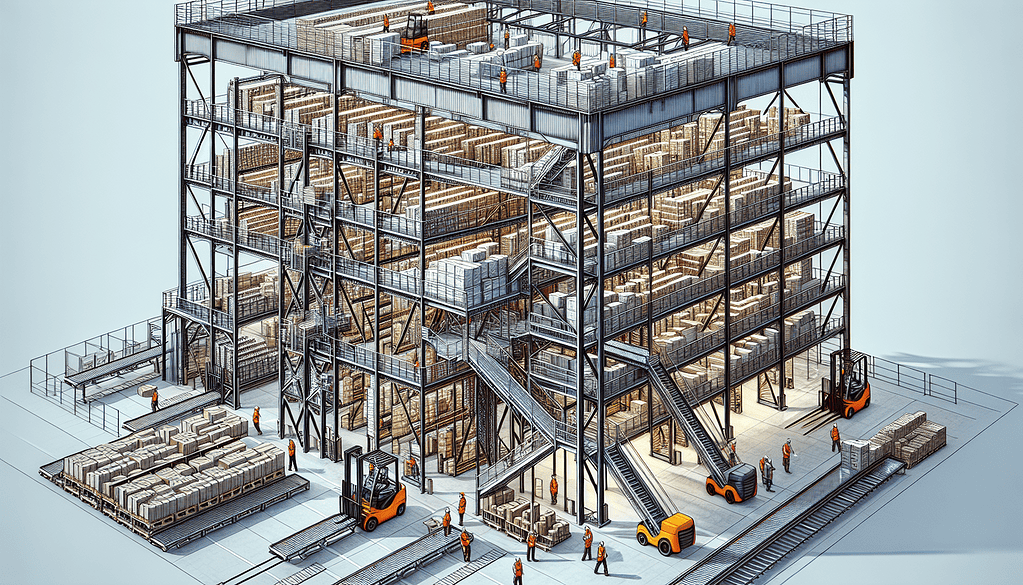
- Product Velocity: High-velocity items may require larger active locations to avoid frequent restocking.
- Physical Characteristics of Inventory: Product size, weight, and stacking limitations affect how much can be safely and efficiently stored in a primary location.
- Supply Variability: Consider suppliers’ reliability and lead times when determining how much inventory to keep on hand,
- Sales Patterns and Seasonality: Adjust active location sizes based on predictable fluctuations in demand throughout the year.
How to Calculate Optimal Location Size for Inventory Types
- Analyze Historical Data: Use past sales and inventory levels to determine average and peak demand for each SKU.
- Establish Replenishment Cycles: Decide how often replenishment will occur. Shorter cycles may allow smaller locations but require more frequent replenishment activities.
- Calculate Safety Stock: Determine the appropriate safety stock level needed to cushion against supply chain disruptions. This will depend on factors like supplier reliability and demand variability.
- Determine Ideal Fill Levels: Calculate each active location’s maximum and minimum fill levels based on the replenishment cycle and safety stock.
- Implement and Adjust: After calculating initial location sizes, monitor performance and adjust as needed. This iterative process helps refine the estimates and improve inventory efficiency.
Pro Tip: When calculating the optimal location size, make sure to understand: can you stack the product in the location (pallet locations or carton flow locations), do you want the product stocked width-wise or length-wise, do you need multiple facings of the SKU or are you using multiple locations, are you replenishing the SKU too often or not enough (see reporting section below), and how many days on hand do you want in the location? These questions are just the tip of the iceberg but will get you thinking in the right direction.
Combining advanced replenishment strategies with accurate calculations for active location sizes allows warehouses to operate more efficiently and responsively.
By aligning inventory management practices with real demand and operational capacities, businesses can enhance overall supply chain performance and adapt quickly to market changes.
Utilization of Different Storage Locations
Pallet Flow Locations
- Characteristics: Pallet flow systems use gravity-driven conveyors that allow pallets to move smoothly from loading to unloading.
- Benefits: It is ideal for high-density storage, reducing aisle space and increasing cubic storage efficiency. It is also perfect for First-In, First-Out (FIFO) operations, facilitating efficient inventory turnover.
- Considerations: You want to set your minimum/maximum replenishment based on pallets and not cases. Here’s why: If your location holds 2 pallets, then you want to replenish the location with pallets (full or partial). You cannot do this if you replenish based on unit or case quantity because you will always have less than full pallets in reserve.
- Product Storage: For the SKUs that you plan on picking out of pallet flow, you want to put (or keep) those SKUs on pallets from inbound and putaway and set up a pallet replenishment. You do not want to replenish cases to a pallet flow location, especially on the upper levels.
- Best WMS Configuration: To keep track of the pallet inventory (typically two or more pallets), your WMS must understand how many cases are on each individual pallet and create a pallet replenishment when the quantity of the front pallet, the first one replenished, is exhausted. For example, if the first pallet has 50 cases and the second has 100 cases, the second pallet position will be available after you pick 50 cases. Once this quantity is picked out, your replenishment trigger is 100 cases. This is why it is critical to understand the number of cases/pallets replenished.
- Other WMS Configuration: If your WMS forces you to replenish based on unit quantities, you should set the replenishment trigger at 45% of the total location capacity, hoping the first pallet will be gone once the third pallet enters the pallet flow. Remember that not all pallets in your reserve or storage locations are full pallets – it’s just the nature of inbound receipts. You will have partial pallets. For example, if the location holds 200, the first pallet (in the pallet flow) has 50, and the second pallet has 50, you will get another pallet of product once you pick 5 cases from the first pallet. The MAX is 200 and the MIN is 95. Even though both locations are occupied. This generates more inventor not in a systemic location, which is never a good thing.
Carton Flow Locations
- Characteristics: These systems are similar to pallet flow but designed for cartons and smaller items. They also utilize gravity-fed rollers or wheels.
- Benefits: It increases picking efficiency by automatically replenishing the pick face as items are removed. It also reduces travel and handling time, especially for high-volume order picking.
- Considerations: First, your MIN and MAX replenishment values must be divisible by the case quantity. For example, if your location holds 4 cases and each case has 12 units (MAX is 48), then your replenishment should trigger once you reach 24 units (+2 cases). But if your location holds 5 cases, for a total of 60 units, your replenishment trigger is also 24 units (+2 cases). You cannot simply make the replenishment trigger 50% of the MAX unless your WMS will ’round down’ to the units/case first.
- Product Storage: Many small items are a great fit for carton flow, but they either need to be in a master case or in a bin box. Some operations will cut the case open, making it easier for the picker to get to the product. Other operations will use bin boxes and fully de-trash the SKU making it 100% pick ready. I prefer using bin boxes. I’ve seen too much product damaged by trying to cut up the master case without using a cutting board.
- Characteristics: Conventional shelving units are used to store smaller items that do not require large equipment to handle.
- Benefits: It provides easy access and visibility and is suitable for manual picking processes. Flexible setup allows for adjustable shelving to accommodate varying product sizes.
Decision Factors for Using One Over the Other
- Product Size and Weight: Larger, heavier items may require pallet flow systems, whereas smaller, lighter items are typically more suited to carton flow or shelving.
- Inventory Turnover: High turnover items are well-suited to flow systems as they support rapid restocking and picking.
- Pick Frequency: Frequent picking operations benefit from carton flow and shelving due to their ease of access and ability to quickly restock.
- Warehouse Space: Limited space might necessitate high-density solutions like pallet or carton flow systems.
Using Storage Space Over and Under the Conveyor
- Maximizing Warehouse Space: Utilizing these often-overlooked areas can significantly increase the storage capacity of a facility without expanding its footprint.
- Improving Efficiency: Placing slow-moving or excess inventory overhead or under conveyors can free up more accessible locations for fast-moving items, improving overall operational flow.
- Cost-Effectiveness: Using existing space is generally more cost-effective than acquiring additional storage facilities.
Case Studies of Successful Implementations

Case Study 1: E-Commerce Giant Utilizes Overhead Space
An e-commerce company integrated multi-level shelving above their conveyor belts, which allowed them to store additional stock and seasonal items without impacting the main warehouse operations. This adjustment led to a 15% increase in storage capacity and faster access to less frequently ordered products.
Case Study 2: Manufacturing Firm Uses Under-Conveyor Storage
An automotive parts manufacturer stored non-critical tools and equipment under its conveyors. This strategy freed up valuable floor space for production activities, enhancing the overall efficiency of its operations.
By carefully considering the type of storage system and creatively using available spaces, warehouses can optimize their operations and improve efficiency. This section of the guide highlights the strategic thinking required to manage and utilize different storage locations within a warehouse effectively.
Inventory Management
How to Determine the Appropriate Days/Weeks of Inventory
- Analyze Sales Data: Utilize historical sales data to understand the demand patterns of different products. Seasonal trends, promotions, and other demand drivers should be considered.
- Evaluate Lead Times: Assess the lead time required to replenish each product. Products with longer lead times might need more inventory days to prevent stockouts.
- Consider Product Lifecycle: Factor in where each product is in its lifecycle. New or promotional items might require different inventory strategies than established or declining products.
- Implement Safety Stock Levels: Determine the amount of safety stock needed for each product based on its demand variability and supply chain risks. This ensures a buffer against unexpected fluctuations.
Tools and Techniques for Effective Inventory Forecasting
- Demand Forecasting Software: Use advanced forecasting tools to incorporate various factors such as seasonal fluctuations, market trends, and historical data.
- Economic Order Quantity (EOQ) Model: Implement the EOQ model to calculate the ideal order quantity that minimizes ordering and holding costs.
- ABC Analysis: Classify inventory based on the value and frequency of sales to prioritize different management strategies for different categories.
- Just-In-Time (JIT) Inventory System: Employ JIT principles to reduce inventory levels and minimize holding costs by receiving goods only as they are needed.
Solving Replenishment Issues

Common Challenges in Replenishment Processes
- Overstocking and Understocking: Balancing inventory to avoid excess stock while ensuring sufficient supply to meet demand.
- Inaccurate Demand Forecasts: Difficulty accurately predicting sales, leading to potential stockouts or overstock situations.
- Supply Chain Disruptions: Unanticipated delays and disruptions can cause significant replenishment challenges.
- Inventory Shrinkage: Inventory loss due to theft, damage, or administrative errors impacting replenishment accuracy.
Pro Tip: If you are over-replenishing products to a location that cannot hold the inventory, make sure you stage this inventory somewhere on the floor near the location where it can get lost and/or damaged. Or maybe a picker will find what looks like the right product and ship that one instead.
Please stop doing this. Find a solution. Create overflow locations and scan the product there. Move the SKU to a larger location or get your WMS to use dynamic slotting with multiple locations. This is one of my top 10 behaviors to stop doing in your warehouse. All inventory MUST be in a systemic location at all times.
Troubleshooting Guide for Common Issues
Problem: Frequent Stockouts
- Solution: Improve forecasting accuracy, increase safety stock levels for high-demand items, and enhance supplier communication to shorten lead times.
Problem: Excessive Inventory
- Solution: Implement a more robust inventory review process, adjust ordering patterns, and possibly introduce promotions to clear out excess stock.
Problem: Inaccurate Inventory Records
- Solution: Schedule physical inventory counts regularly, improve warehouse staff training on inventory management practices, and enhance the use of automated scanning and tracking systems.
Problem: Supplier-Related Issues
- Solution: Diversify the supplier base to reduce dependency on a single source, establish backup suppliers, and negotiate improved terms and conditions.
Pro Tip: Fix all of the MIN and MAX values in one section and then run your replenishment to fill to MAX. Any product that will not fit tells you either the current inventory counts are inaccurate, or the MAX value is inaccurate. Either way you can clean up entire sections in relatively short amounts of time.
Effective inventory management involves a continuous cycle of evaluation and adjustment. By understanding the unique challenges of replenishment and employing strategic solutions, businesses can maintain optimal inventory levels, minimize costs, and efficiently meet customer demand.
Replenishment Reporting and Metrics

What Reports to Generate
- Replenishment Frequency Report: Tracks how often each SKU is replenished, highlighting potentially excessive replenishments.
- Inventory Turnover Report: This helps identify SKUs with lower turnover rates, which may indicate overstocking or excessive replenishment.
- Stock Level Analysis Report: This report assesses inventory levels against predetermined targets to find discrepancies that might lead to excessive or insufficient replenishment.
How to Use Data to Minimize Unnecessary Replenishments
- Analyze Trends and Patterns: Use data from the reports to identify trends and outliers in replenishment activities. Adjust replenishment parameters based on these insights to align more closely with actual demand.
- Set Trigger Points: Establish data-driven trigger points for replenishment based on real-time inventory levels and forecasted demand.
- Continuous Improvement: Regularly review replenishment strategies and refine them based on new data and changing market conditions to ensure optimal inventory management.
Lean Replenishment (Fill to a Percent) vs. On-Demand vs. Min/Max Replenishment
- Lean Replenishment (Fill to a Percent): Focuses on maintaining inventory at a specified percentage of full capacity, ideal for maintaining consistent stock levels without overstocking.
- On-Demand Replenishment: Triggered by actual customer orders, minimizing inventory holding costs but requiring a highly responsive supply chain.
- Min/Max Replenishment: This strategy involves replenishing inventory when it drops to a minimum threshold up to a maximum level. It balances having enough stock on hand while avoiding excess.
Case Studies Showcasing the Effectiveness of Each Method:
- Lean Replenishment: A retail chain implemented a lean replenishment system and reduced excess stock by 20%, improving in-stock rates for high-demand items.
- On-Demand Replenishment: An e-commerce company adopted on-demand replenishment, significantly reducing storage costs and enhancing cash flow.
- Min/Max Replenishment: A manufacturing firm used min/max levels to streamline their parts inventory, resulting in a 15% decrease in production downtime due to out-of-stock incidents.
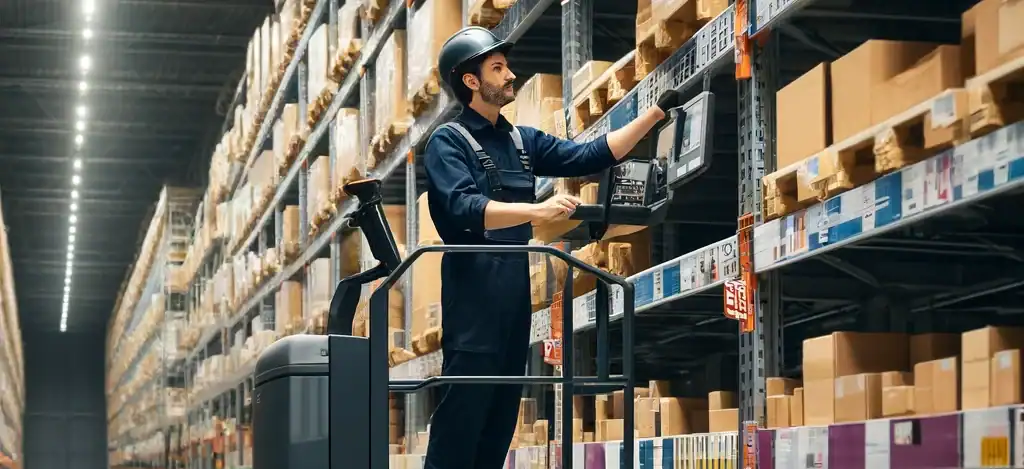
Optimizing Replenishment
How to Distribute Inventory to Minimize Movement
- Strategic Placement: Place high-velocity items closer to packing and shipping areas to reduce movement and handling time.
- Zone Picking Optimization: Distribute inventory across multiple zones based on sales velocity and product category to minimize travel time and improve picking efficiency.
- Use of Advanced Software: Implement warehouse management systems (WMS) that automatically suggest optimal storage locations based on historical data and picking patterns.
Benefits of Multi-Location Inventory Management
- Reduced Handling Times: Having multiple strategic locations reduces the distance that items need to be moved, speeding up the overall process.
- Improved Responsiveness: By spreading inventory across multiple locations, warehouses can respond more quickly to regional demand changes and reduce shipping times.
- Enhanced Risk Management: Distributing stock across multiple locations can mitigate risks associated with localized disruptions, such as natural disasters or supply chain interruptions.
Best Practices and Tips
- Adopt Technology Solutions: Leverage IoT, AI, and predictive analytics technologies to enhance forecasting accuracy and replenishment efficiency.
- Regularly Review and Adjust Replenishment Parameters: Keep replenishment strategies flexible and adaptive to changes in demand, market conditions, and operational capacities.
Expert Advice and Recommendations
- Engage in Continuous Learning: Stay updated with industry trends and case studies to refine and improve replenishment strategies continuously.
- Collaborate Across Departments: Ensure communication between sales, operations, and inventory management teams to align replenishment activities with broader business goals.
Implementing these advanced replenishment strategies and best practices can significantly improve inventory management, operational efficiency, and customer satisfaction.

Conclusion – SKU Replenishment
SKU replenishment is a fundamental aspect of efficient warehouse management and is critical in ensuring that inventory levels are optimized to meet customer demands without incurring unnecessary costs.
Throughout this guide, we have explored various replenishment methods, from basic techniques such as pallet, case, and each replenishment to more sophisticated strategies like lean, on-demand, and min/max replenishment.
We’ve also discussed the importance of effectively using different storage locations and leveraging advanced reporting and metrics to continually refine replenishment practices.
Continuous evaluation and improvement of replenishment processes are vital for adapting to changes in demand, market conditions, and technological advancements.
Regularly reviewing and updating your strategies based on performance data and industry trends can significantly enhance efficiency, cost savings, and customer satisfaction.
Appendix
Glossary of Terms
- SKU (Stock Keeping Unit): A specific item, including its attributes like size, color, and packaging, tracked in inventory.
- Replenishment: Moving or ordering inventory to fill the stock back up to required levels.
- EOQ (Economic Order Quantity): A formula determining the most cost-effective quantity to order.
- JIT (Just-In-Time): Inventory management methodology that involves receiving goods only as they are needed in the production process.
- ABC Analysis is an inventory categorization technique in which inventory is classified into three categories (A, B, and C) based on criteria such as sales volume or consumption value.
- Cross-docking is a logistics practice where products received at a warehouse are not stored but directly transferred from inbound to outbound shipping areas.

